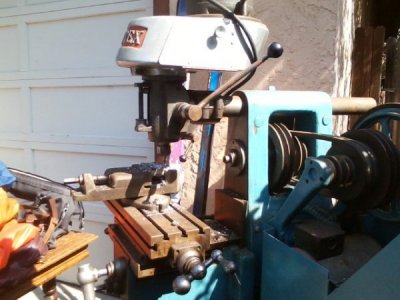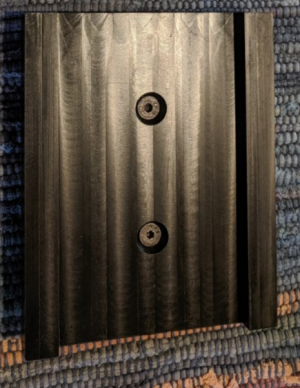- Joined
- Apr 14, 2014
- Messages
- 3,164
What is the opening distance of your vise? If it opens to 4" I would:
1. Cut the material slightly over length with a bandsaw, or other method getting a square a cut as possible
2. Stand it on the edge in the vise
3. Mill 1/4" off the top.
4. Measure the remaining material.
5. Flip it over and mill to size on the other edge.
With the material now at the proper dimension of 4" wide I would:
6. Set the material on parallels in the vise on the wide side with one end sticking beyond the jaws.
7. Square the end.
8. Position a work stop against the new edge to relocate the material after removal
9. Measure the remaining material.
10a. If the remaining material is shorter than the length of the jaws position a 123 block or other shim of known length between the work stop and the newly cut end of the material.
10b. Move the cutter to the uncut end of the material and remove the amount necessary to get the final desired dimension
Now that you have the length and width necessary I would:
11. Once again place it on parallels in the vise. gain on the wide side with slightly over the amount needing to be removed sticking above the jaws of the vise. Essentially you'll be clamping the jaws against the lower 1/4" of material to avoid flexing of the material as the center is removed.
12. Indicate the both the X and Y edges
13. Locate the cutter and start removing material leaving about .010 to .020 extra material on the internal surface of each edge for a final finish cut.
14. Make several passes to cut to the desired depth.
15. Take a full depth finish cut on the internal surface of each edge.
16. Using the location of the previously indicated X & Y edges of the locate the position of both holes, and drill & tap to size.
Note that I did not give exaxt dimensions as to how to position the cutter in relation to the amount of material needed to be removed from each surface. The exact location of the cutter would be dependent on the size being used.
1. Cut the material slightly over length with a bandsaw, or other method getting a square a cut as possible
2. Stand it on the edge in the vise
3. Mill 1/4" off the top.
4. Measure the remaining material.
5. Flip it over and mill to size on the other edge.
With the material now at the proper dimension of 4" wide I would:
6. Set the material on parallels in the vise on the wide side with one end sticking beyond the jaws.
7. Square the end.
8. Position a work stop against the new edge to relocate the material after removal
9. Measure the remaining material.
10a. If the remaining material is shorter than the length of the jaws position a 123 block or other shim of known length between the work stop and the newly cut end of the material.
10b. Move the cutter to the uncut end of the material and remove the amount necessary to get the final desired dimension
Now that you have the length and width necessary I would:
11. Once again place it on parallels in the vise. gain on the wide side with slightly over the amount needing to be removed sticking above the jaws of the vise. Essentially you'll be clamping the jaws against the lower 1/4" of material to avoid flexing of the material as the center is removed.
12. Indicate the both the X and Y edges
13. Locate the cutter and start removing material leaving about .010 to .020 extra material on the internal surface of each edge for a final finish cut.
14. Make several passes to cut to the desired depth.
15. Take a full depth finish cut on the internal surface of each edge.
16. Using the location of the previously indicated X & Y edges of the locate the position of both holes, and drill & tap to size.
Note that I did not give exaxt dimensions as to how to position the cutter in relation to the amount of material needed to be removed from each surface. The exact location of the cutter would be dependent on the size being used.



